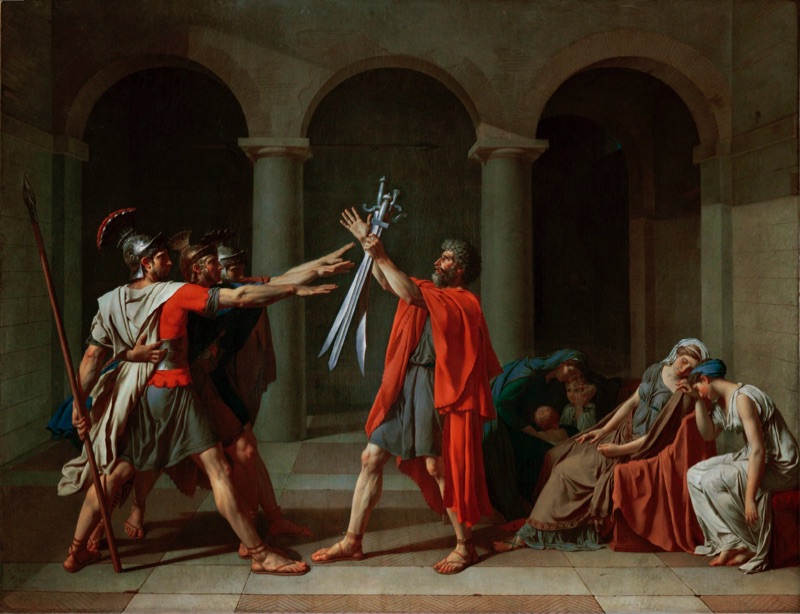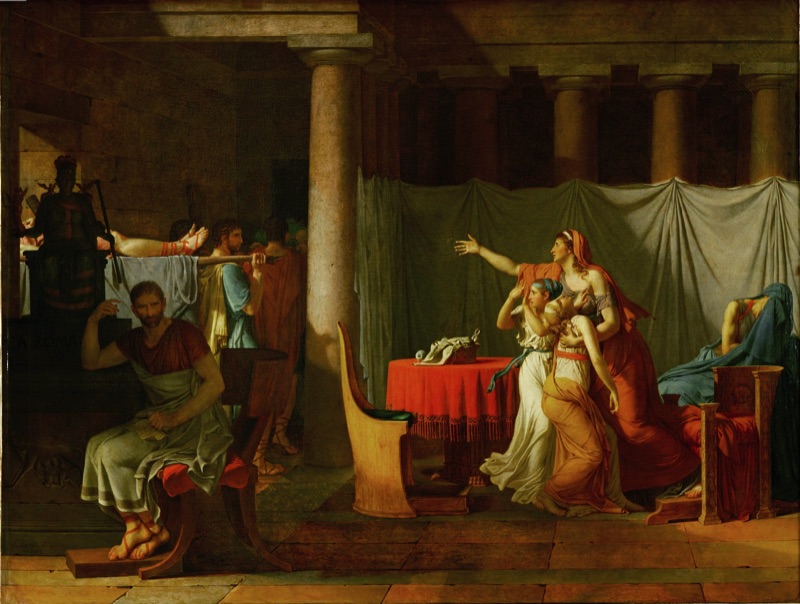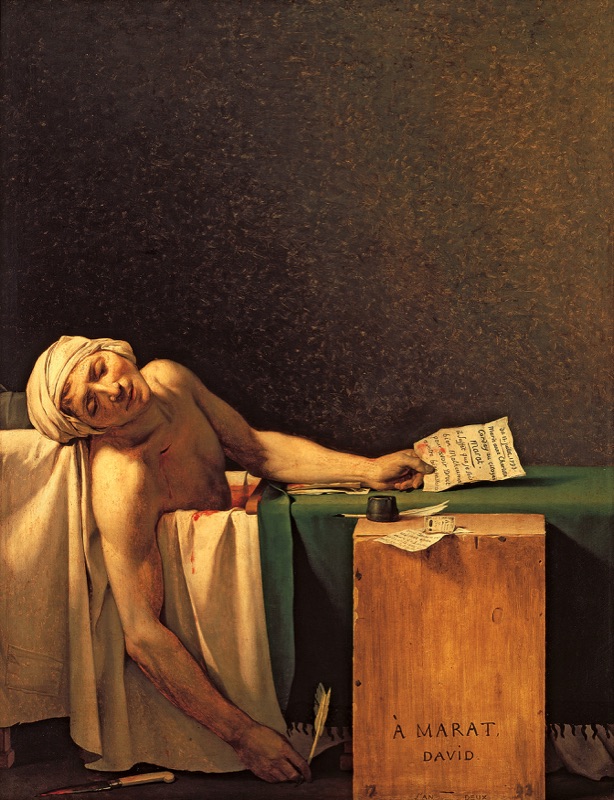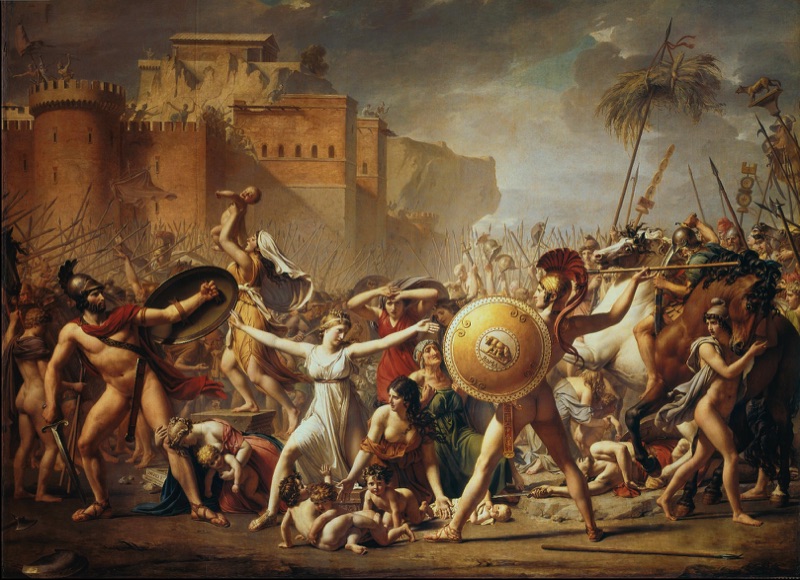Jacques-Louis David and his patrons
pre-class prep: read Chu pp. 94-103 (PDF)
read Politics in France, 1774-1900
discussion questions: Both respondents for each work below should write and hand in a 2-page paper (now due Tues February 6, hard copy in class) addressing the following questions:
a. What is the subject or story of the work, and how is that story being told?
b. What general lesson is the work trying to teach its viewers?
c. What was the political situation in France at the time the work was commissioned and exhibited?
d. How did the patron and/or David use the work to intervene in or comment on that political situation?
Although two of you are assigned per work, it's not a team project; you should do your papers individually.
1. (Connor T) David, The Oath of the Horatii, 1784-85
2. (Kate R & Warsan S) David, Brutus and the Lictors, 1789
3. (Rachel M & Max M) David, The Death of Marat, 1793
4. (Sylvia L & Grace M) David, The Intervention of the Sabine Women, 1799
You will need to do some online research on these works using Google and Wikipedia, in addition to the text. Be sure to look closely at the image itself as well: your paper should primarily be about the image and its intended message, not just basic facts. List your sources at the end of the paper, including a brief title and author (if known) plus URL, in this format:
(1) Wikipedia article, 'The Death of Marat,' accessed January 27, 2024, https://en.wikipedia.org/wiki/ The_Death_of_Marat
Come prepared to present your ideas and answer follow-up questions about your paper. Although research is encouraged, do not copy or closely paraphrase any source and do not use ChatGPT or any other AI to either write or research the paper. Do your own research, thinking, and writing. Any plagiarism (presenting work as your own when it was not) will result in a zero on the assignment and will be reported to the Academic Misconduct Committee.
people, terms, and concepts: the five 'genres of art' (history painting, portraiture, genre painting, landscape painting, still life); the hierarchy of the genres, patron, patronage system vs. market system, the French Revolution (1789), the Terror (1792-93)
key points:
• What are the five main genres of art and what was the 'hierarchy of the genres'? Which genre was considered the most important among the five?
• What is the difference between the 'patronage' and the 'market' system of selling art? Which works that we have covered were produced under which system? To figure out the meaning of works of art, it's often useful to ask, 'Who was the patron and what were they trying to say by paying to have that work produced and exhibited?'
• How was history painting used as propaganda for wealthy and powerful individuals and institutions, such as the government and the church?
• Who were the main patrons that David worked for over the course of his long career? How did he modify the political messages of his works to suit these different patrons? (We'll continue this point when we look at David's work for Napoleon later).
• What were the subjects/stories of each of the key works above? What moral or civic lesson(s) do they intend to teach their viewers? How does David carefully design the visual rhetoric of the works (choice of narrative moment, gestures/poses, composition, lighting, etc.) to tell those stories and convey those lessons?
• How do the works and those lessons implicitly or explicitly respond to and attempt to intervene in the contemporary political situation in France at the time they were painted/exhibited? Whose political interests do the works serve?
Jacques-Louis David, The Oath of the Horatii, 1785
David, Brutus and the Lictors, 1789
David, The Death of Marat, 1793
David, The Intervention of the Sabine Women, 1799




